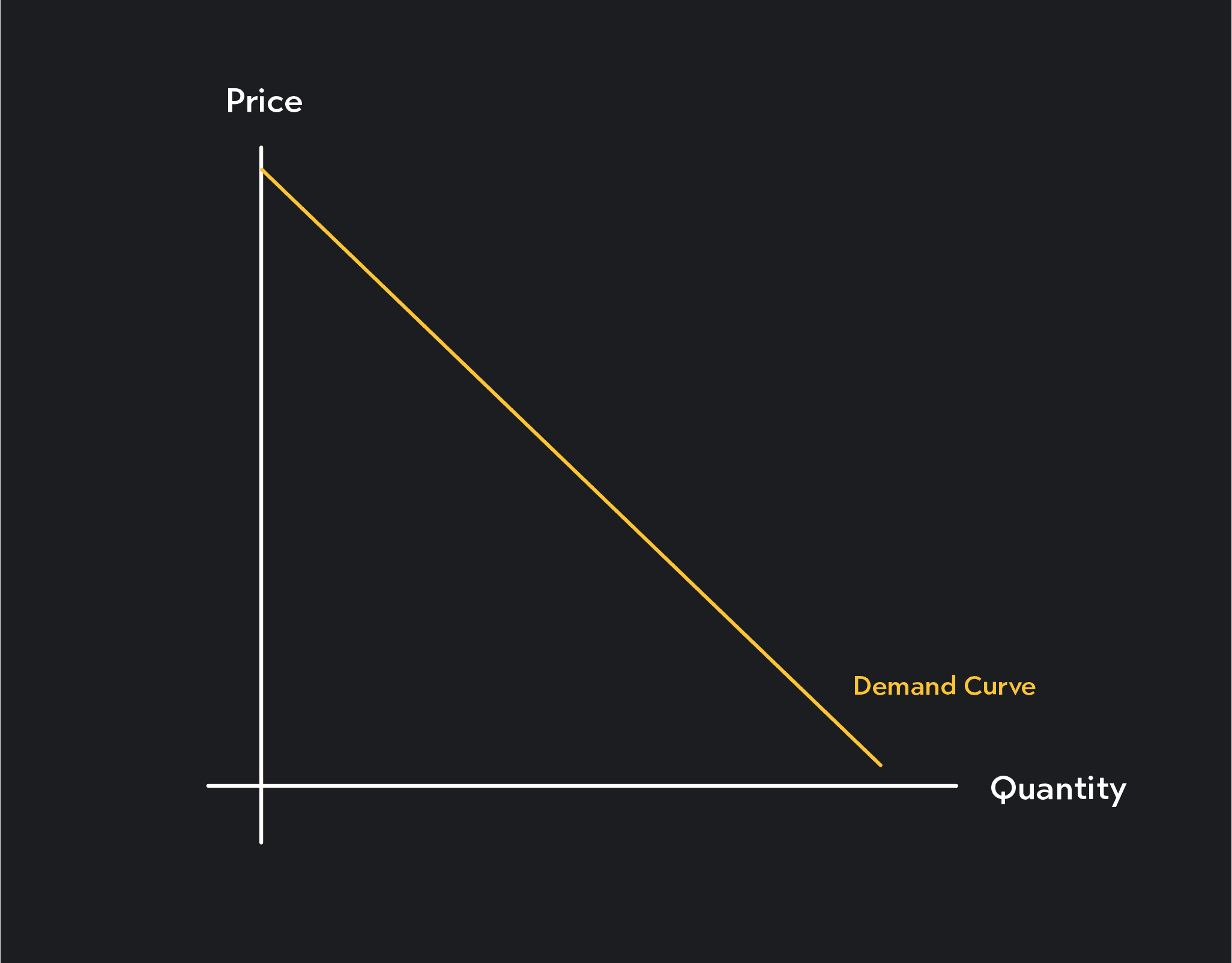
Economics
Understanding the Demand Curve and How It Works
Learn what the demand curve is, how to calculate it, how it works, and the different types. Plus learn what causes it to shift and movements along it.
Sarah Thomas
Subject Matter Expert

Economics
03.28.2023 • 3 min read
Subject Matter Expert
Learn about quantity demanded, its relationship with price, and what happens when there’s a shift in the quantity demand, and price elasticity of demand.
In This Article
In economics, quantity demanded refers to the number of a good or service that consumers are willing to buy at a specific price. For example, if consumers are willing to purchase 1,000 lemons at a price of $0.50, we say the quantity demanded is 1,000 at a price of $0.50.
Be careful not to confuse quantity demanded with demand. The two terms may sound similar, but they are distinct.
Demand refers to the general behavior of buyers or the full set of quantities consumers are willing to purchase at different prices. On a demand graph, demand refers to the entire demand curve.
Quantity demanded refers to a particular quantity associated with a given price. On a demand graph, quantity demanded refers to a quantity linked to a given price or a particular point along the demand curve.
The relationship between price and quantity demanded is an inverse relationship, meaning higher prices are associated with a lower quantity demanded, and lower prices are associated with a higher quantity demanded. In economics, we call this inverse relationship the Law of Demand. The Law of Demand tells us, all else being equal, consumers tend to buy more of a good or service when prices are lower.

Quantity demanded changes with a ceteris paribus change in the price. Ceteris paribus is a Latin phrase meaning all else being equal or all else being constant. If everything else that could affect buyer behavior is held constant and price changes, buyers will typically react by adjusting the quantity they demand.
For goods with a downward-sloping demand curve—i.e., goods that follow the law of demand:
Quantity demanded will decrease when price increases
Quantity demanded will increase when price decreases
As an example, think about booking a nice Airbnb or hotel room for a weekend. If you see a high price, you may only book the place for a single night, but all else being equal, if you can get the same place at a lower price, you’ll likely want to extend your stay for an extra night or two.
The degree to which consumers adjust their quantity demanded in response to a change in price is called the price elasticity of demand. You can calculate the price elasticity of demand by dividing the percentage change in price by the percentage change in quantity demanded and taking the absolute value of the quotient.
Goods that have an elasticity of demand greater than 1 are considered elastic—sensitive to price changes. Goods that have a price elasticity less than one are considered inelastic—insensitive to price changes. In other words, when price changes, the quantity demanded for elastic goods will change more relative to the change in quantity demanded for inelastic goods.
In extreme cases, you can have perfectly elastic or perfectly inelastic goods. For a good or service with perfectly elastic demand, quantity demanded will drop to zero with even the slightest change in price. For a good or service with perfectly inelastic demand, quantity demanded will be impervious to price changes. No matter what the price, consumers will demand the same quantity.
A change in quantity demanded shouldn’t be confused with a change in demand more generally. Quantity demanded changes in response to a ceteris paribus change in price, but demand changes in response to changes in non-price determinants of demand.
When demand changes, the entire demand curve shifts. In other words, consumers will adjust the quantity they demand at every price point.
When consumer demand increases, the demand curve shifts to the right and buyers demand a higher quantity of good or services at each price. If demand decreases, the demand curve shifts to the left and buyers will demand a smaller quantity at each price.
Demand can change for any of the following reasons:
A change in consumer preferences
A change in the price of complementary goods or substitutes
A change in consumer expectations about the future
A change in demographics or the number of buyers in the market
A change in consumer income
On a demand graph, where price is plotted on the y-axis and quantity is plotted on the x-axis, changes in quantity demanded are represented by a movement along the demand curve, while a change in demand is shown by a rightward or leftward shift of the entire demand curve.
If you need more examples and extra insight, here’s Dr. Homa Zarghamee breaking down the demand curve:
Outlier (from the co-founder of MasterClass) has brought together some of the world's best instructors, game designers, and filmmakers to create the future of online college.
Check out these related courses:

Economics
Learn what the demand curve is, how to calculate it, how it works, and the different types. Plus learn what causes it to shift and movements along it.
Subject Matter Expert

Economics
This article is a comprehensive guide on the causes for a demand curve to change. Included are five common demand shifter examples.
Subject Matter Expert

Economics
Learn the key differences with a movement and shift in the demand curve. We’ll give a complete overview with real-world examples.
Subject Matter Expert